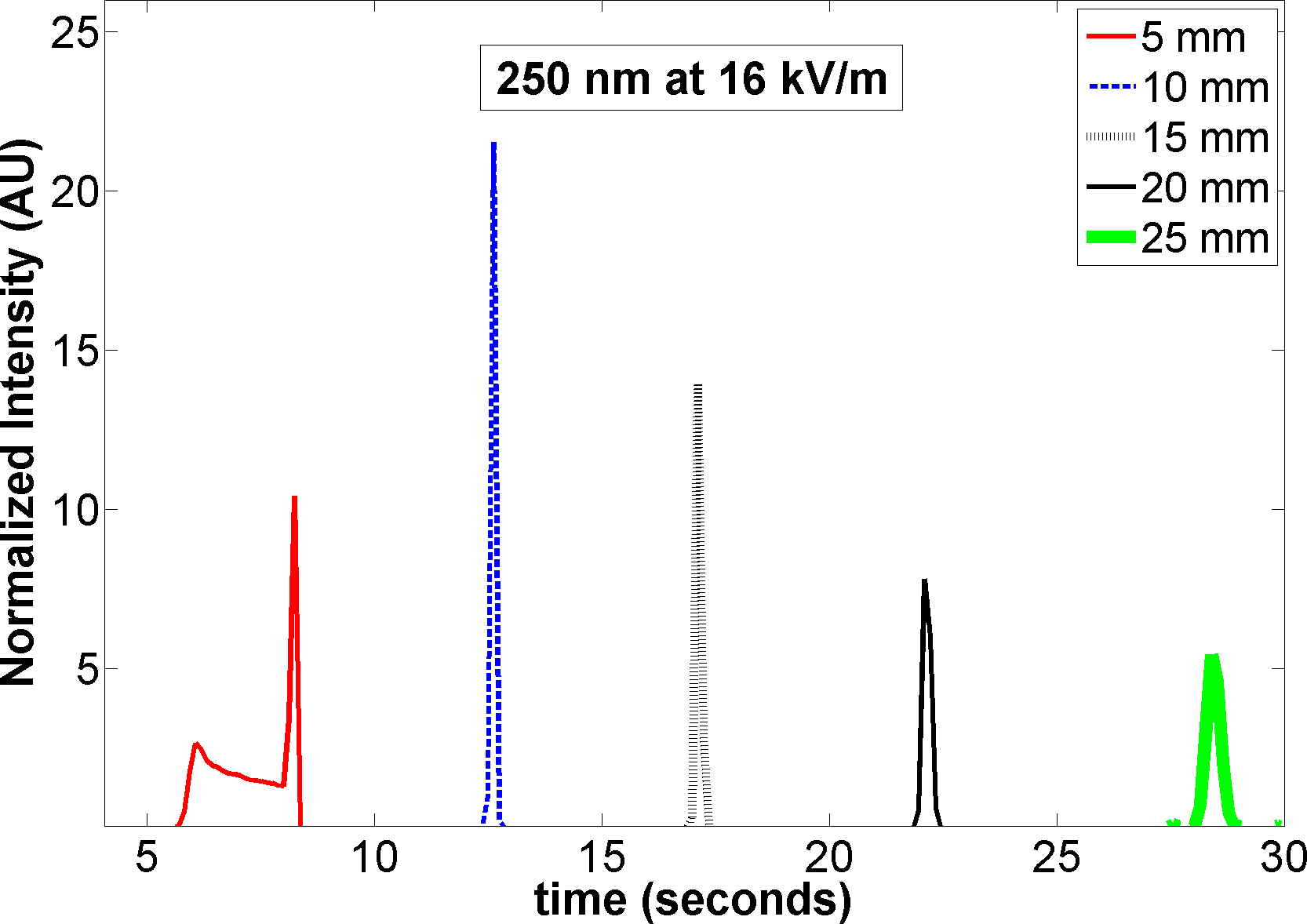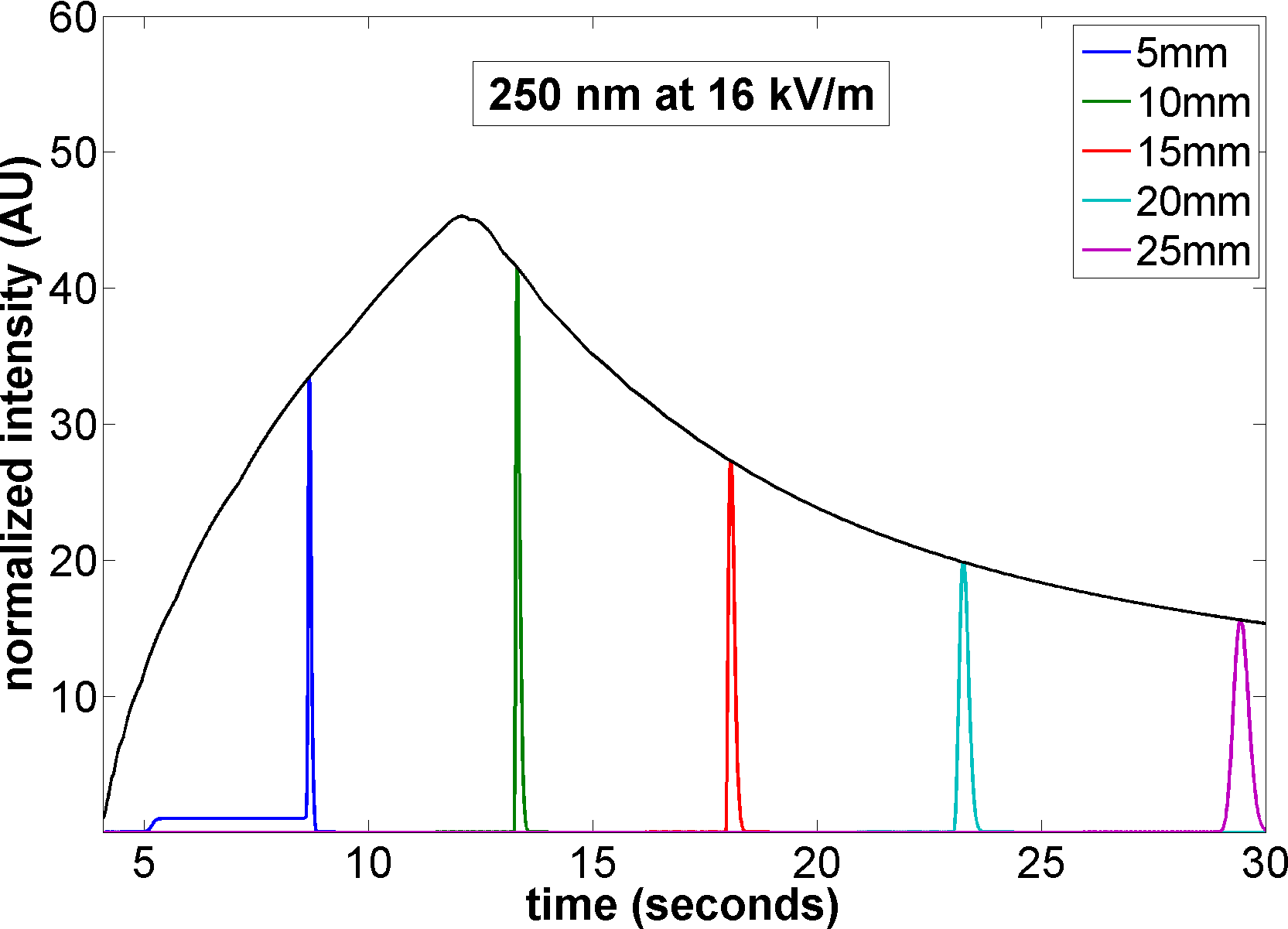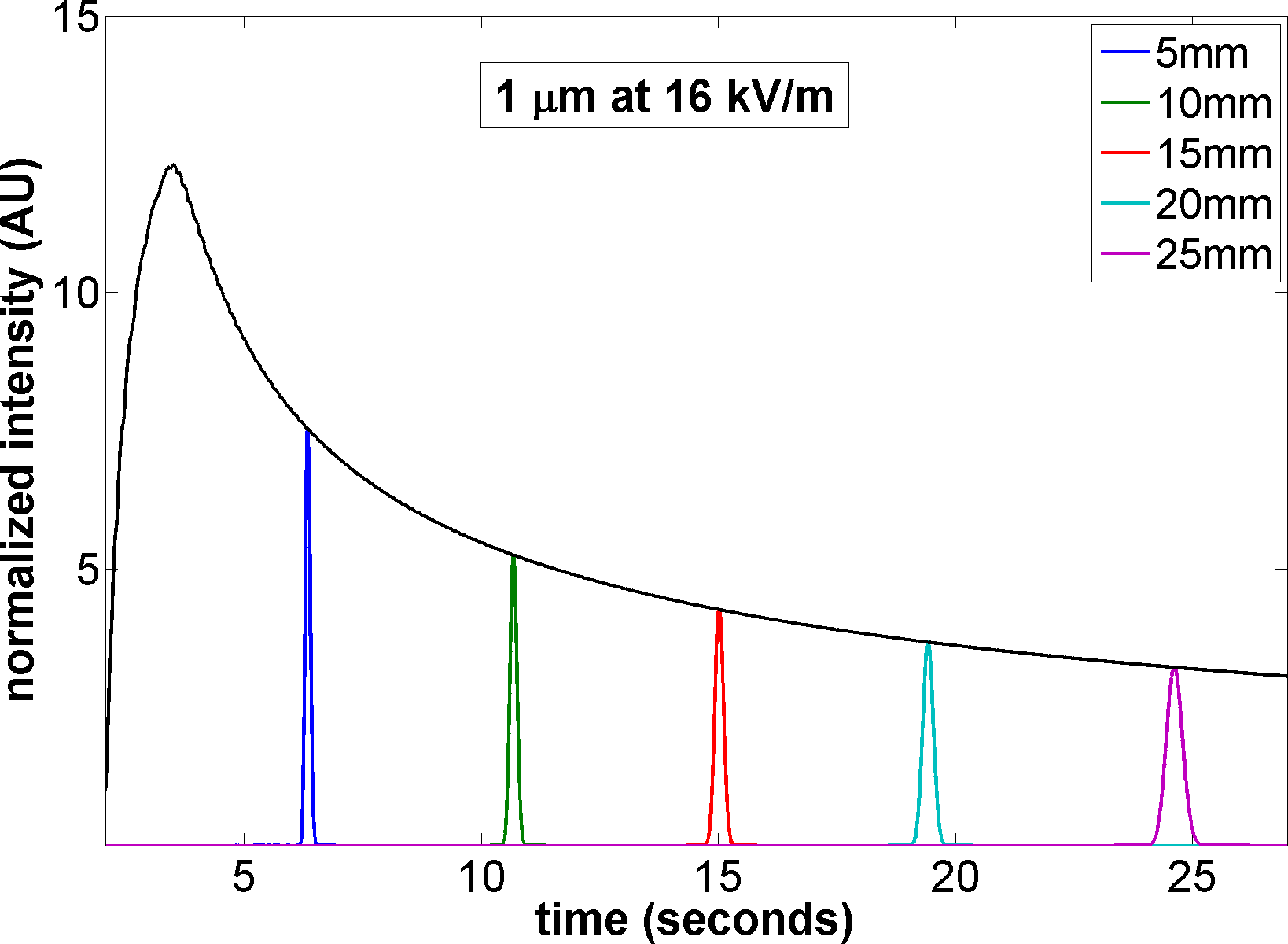
projects
fluids course
ISIM course
random old notes
hands-on school
Nanofluidics
Nanofluidics refers to the study of fluid flow in devices with length scales generally less than 100 nanometers. As devices shrink below the micron scale, fluid flow and molecular transport become dominated by the physics of surfaces. Thus, new capabilities and new challenges are introduced which far different than found in microscale counterparts. Nanofluidics can provide a level of control at the molecular level which has sparked interest in applications in analytical chemistry, pharmaceuticals, and environmental health and safety. A major problem for nanofluidics is detection due to the low number of molecules inherent in the system. In order to realize many proposed applications with nanofluidics, concentration of the sample is necessary.We have begun a joint theoretical and experimental effort to study sample concentration in nanofluidics using a well-established technique for micron scale systems, traditionally known as field amplified sample stacking (FASS). In 2010, we conducted the first experiments on nanoscale FASS and found a number of promising results. FASS in nanofluidic systems demonstrates a dramatic increased concentration enhancement over what is predicted and realized in micron-scale counterparts. Concentration enhancements over 200X have been measured in a system that would be limited to a maximum theoretical enhancement of 10X in micron-scale channels. A simple theoretical model with no fit parameters can explain all the key experimental trends. Most importantly, the model predicts and experiments verify that a novel focusing mechanism emerges in nanoscale FASS. This focusing mechanism implies that concentration enhancements of many orders of magnitude greater may be possible.
Below, we show comparisons of sample concentration in a 250 nm and 1 micron channel and compare experiments to our simulation. The classic picture of FASS would predict a maximum theoretical enhancement of 10X which is consistent with the data in the 1 micron channel. The 250 nm channel shows better performance. The model calculations on the bottom row match the experiments reasonably well.
Experiment: 250 nm channel

|
Experiment: 1 micron channel

|
Simulation: 250 nm channel

|
Simulation: 1 micron channel

|
We continue to develop the model and generate new experimental results in nanoscale FASS. Our aim is to refine our theory such that we can make useful quantitative predictions. Once our model is able to accurately model concentration enhancement, we will use it to design optimal nanofluidic systems.
Collaborators: Suumita Pennathur at UCSB.
Conference Talks:
- Storey, B.D., Sustarich, J. and Pennathur, S. 2010 Field amplified sample stacking and focusing in nanofluidic channels. APS Division of Fluid Dynamics Meeting, Long Beach, CA. (abstract) (Presentation)
- Sustarich, J.M., Storey, B.D., and Pennathur, S., 2010 Field amplified sample stacking and focusing in nanofluidic channels. Physics of Fluids, 22, 112003. ( Full Text)